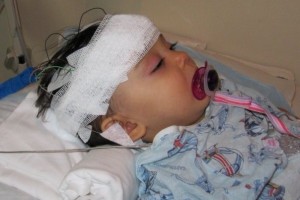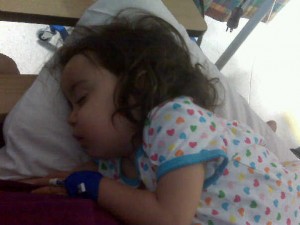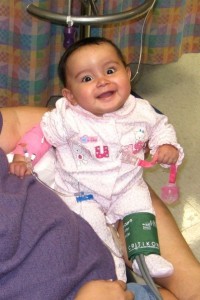Hannah had her sleep-deprived EEG yesterday.
Considering she had woken up at 5:30 am on her own (she was hungry) and I had to keep her up until 1:00 pm, she did pretty well. It was much more involved than the EEG she did at the NIH where she slept the entire time, especially when they put on the electrodes.
Unfortunately, she did NOT like the electrode placement. She was exhausted, having someone mess with her hair with goop and gels, and she just did not want to have any of it. But she made it through, and she went right to sleep as soon as she the technician walked out of the room.
They let her sleep for about 20 minutes or so, then they had to wake her up for another 20 minutes or so. She did not want to be woken up, but she was somewhat willing to play toys with me in the bed. Then they did the photic stimulation strobe light thing for about 5 minutes (talk about annoying!).
The entire process was almost 2-1/2 hours. I’m so proud of her. She really did fantastic considering we couldn’t really explain things to her plus the fact she was just exhausted. Surprisingly, she did not fall asleep on the way home, but she did take a nap around 6 pm for about 30 minutes, and then fell asleep for the night around 8:30 pm.
We should get the results in a week. In my heart, I really don’t think she is having seizures. I hope to be proven right.








Latest Comments